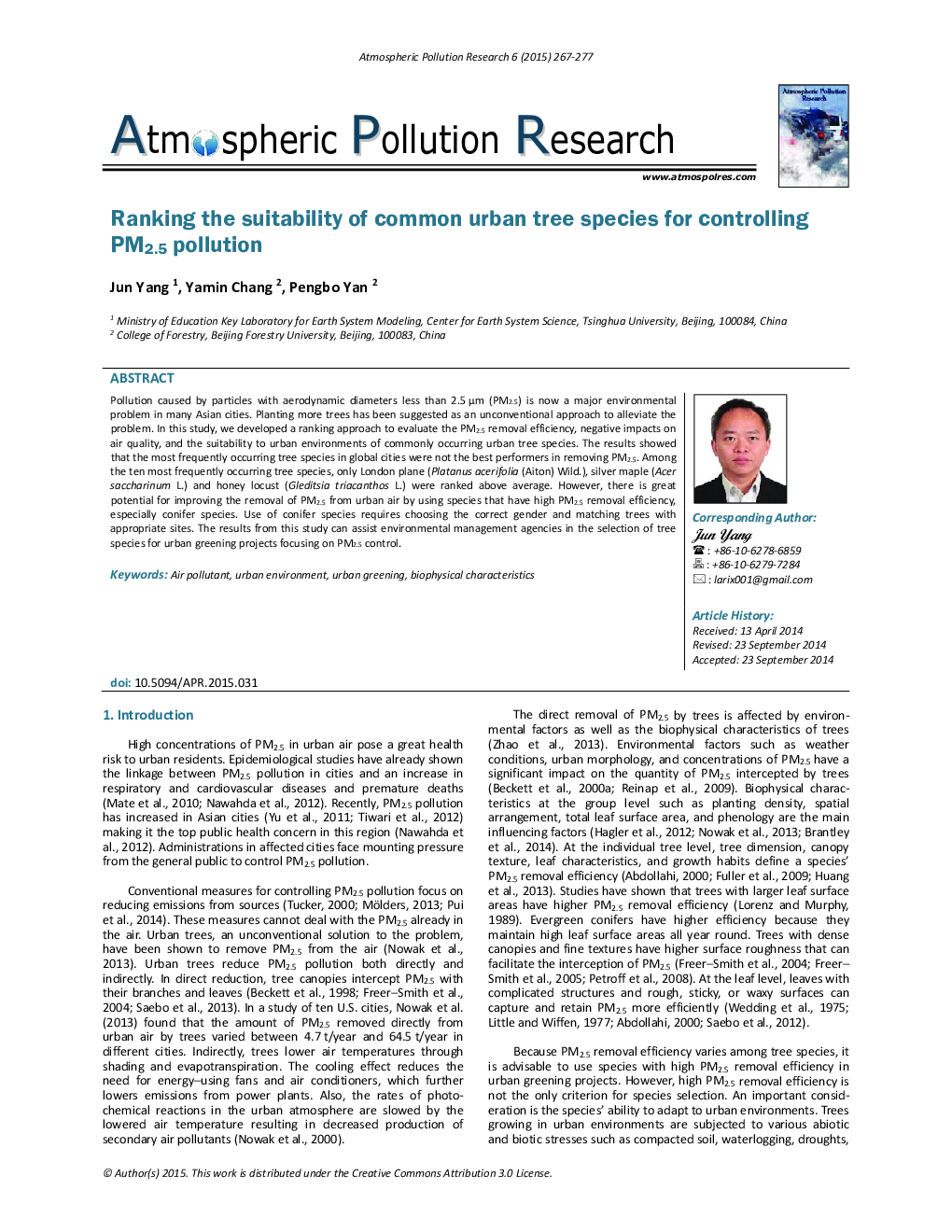| Article ID | Journal | Published Year | Pages | File Type |
|---|---|---|---|---|
| 4434911 | Atmospheric Pollution Research | 2015 | 11 Pages |
Pollution caused by particles with aerodynamic diameters less than 2.5 μm (PM2.5) is now a major environmental problem in many Asian cities. Planting more trees has been suggested as an unconventional approach to alleviate the problem. In this study, we developed a ranking approach to evaluate the PM2.5 removal efficiency, negative impacts on air quality, and the suitability to urban environments of commonly occurring urban tree species. The results showed that the most frequently occurring tree species in global cities were not the best performers in removing PM2.5. Among the ten most frequently occurring tree species, only London plane (Platanus acerifolia (Aiton) Wild.), silver maple (Acer saccharinum L.) and honey locust (Gleditsia triacanthos L.) were ranked above average. However, there is great potential for improving the removal of PM2.5 from urban air by using species that have high PM2.5 removal efficiency, especially conifer species. Use of conifer species requires choosing the correct gender and matching trees with appropriate sites. The results from this study can assist environmental management agencies in the selection of tree species for urban greening projects focusing on PM2.5 control.
